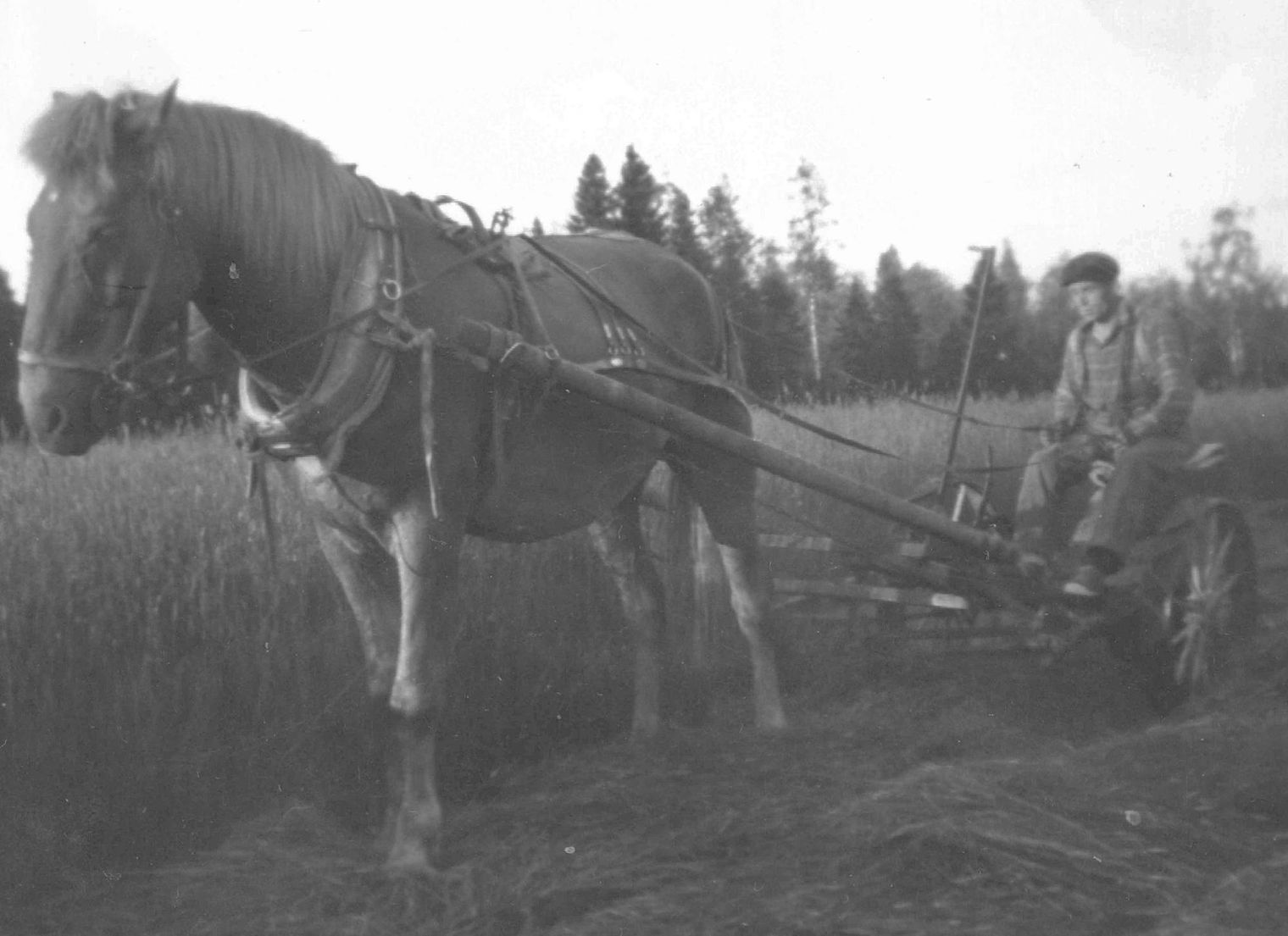The intangible cultural heritage of villages and villagehood
Feb 5, 2024

Mowing hay with a horse (circa 1963) Photo: Lahja Toivanen, Mujejärvi Village Association
The point of interest in University of Eastern Finland’s pilot was found in villages and villagehood and the wide intangible cultural heritage that they have. This guided us to Nurmes and more specifically Mujejärvi, a small village with only 16 residents, but an active village association.
The kind of cultural heritage that is linked to Finnish villages and villagehood is vast. Tangible and intangible cultural heritage are intertwined together strongly in these areas, but if specifically thinking about the intangible cultural heritage, it is shaped in the traditions, customs, and the histories of villages like Mujejärvi and defines the community’s identity. Things like skills, customs, language, and events are passed down from one generation to the next and form many kinds of intangible cultural heritage themes that are specifically found in villages and connect to villagehood. Promoting the understanding of the intangible cultural heritage found in villages and villagehood is important to safeguard and understand the traditional ways of life from the past.
During our pilot we built an exhibition around stories, objects, and new and old photographs to highlight some of the themes related to the intangible cultural heritage of villages and those themes are the following: haymaking, village customs and celebrations, wood building skills, transport and movement in the village, generational stories of local farms (Kujanki & Raatelehto), trade and self-sufficiency of villages and nature and more specifically the relationship with nature (hunting, berry picking and mushroom picking). These themes were not set before starting the pilot process, rather they were constructed around the themes that came up during the process in the workshops we had with the villagers of Mujejärvi. This helped us to build connections between different narratives and eras to show how the intangible cultural heritage of villages can be presented and connected to the present day, highlighting the importance of it, and fostering respect for both cultural diversity and cultural sustainability